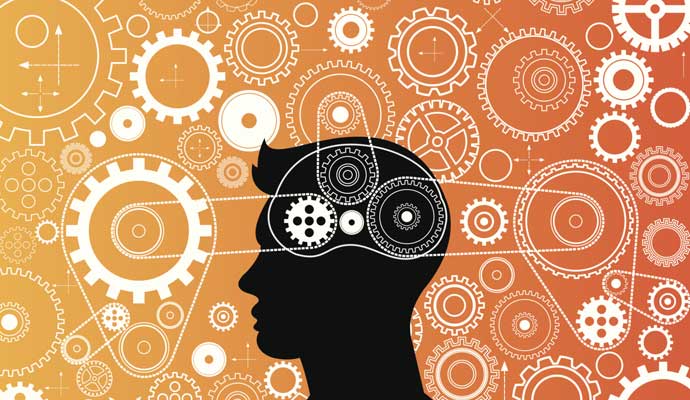Changing Structures and Behaviors at Walgreens
When your strategy shifts, you may need to redesign your organization as well.
Change is never easy, and when you’re a 112-year-old enterprise like Walgreen Company (“Walgreens”), it’s even less so. For most of the past three decades, our success came from expanding our retail footprint. That was our business strategy. We called it “seven by 10,” meaning we wanted to have 7,000 stores by 2010. In fact, we beat that goal—going from 4,250 stores in 2003 to 7,000 in 2009. At our peak, we were opening a store every 17 hours.
To support the seven-by-10 strategy, we had some well-refined capabilities. For example, we were very good at managing real estate, including construction and analytics. We could tell you almost anything about any street corner in the United States. We could predict, within 3 percent, the volume for a potential new location in various categories, including pharmacy and front-end sales.
The old Walgreens business strategy required a command-and-control approach to leadership. We set out clear processes for our employees, and they followed them. It was straightforward and effective for the task at hand, and it worked for a long time. But then the competitive landscape changed. New rivals entered the market, such as third-party pharmacy benefits management companies that deliver prescriptions by mail. More grocers started offering in-store pharmacies. An even bigger challenge was the growth of Internet pure plays, like Amazon and Google, which sell most of what we carry. All of these had the potential to lure customers out of our stores.
At the same time, we started to see significant changes in healthcare, which ultimately resulted in the passage of the Affordable Care Act and the advent of accountable care organizations. Throw in the worst economy since the Great Depression, and we knew we had to change our strategy. In this new market, with the huge push to improve quality and reduce overall healthcare costs, Walgreens had a significant opportunity to become a player in the healthcare value chain. As a result, we evolved from simply filling prescriptions for people to becoming a single point of patient care, and a destination for health and daily-living products and services for our customers.
To succeed in this new role, we had to change our business strategy. Instead of relying on a real estate play—location, location, location—we focused on improving the customer experience. As our strategy evolved and our focus changed from opening stores to delivering an exceptional customer experience, we recognized that not only was the command-and-control approach outdated, but it also prevented us from getting the best from our people. We were missing the richness of empowering them to come up with solutions on their own.
We looked around at other retail players known for delivering a quality experience. It’s strange—people have an emotional connection to a cup of coffee. We provided healthcare and didn’t see that emotional connection anywhere in the drugstore space. Our market research data also told us that customers didn’t perceive differences among the major drug retail chains. We realized that we could really differentiate ourselves based on the experience we delivered. This represented a fundamental change in how we engaged with our market. We wanted to be more than a simple retail chain—we wanted to be an experience provider.
To execute that strategy, however, we needed to redesign some components of the organization. We had to focus our frontline and field leadership on coaching employees and creating the right customer interactions. And we had to free up time among leaders to enable this. This was only partly a structural issue. We’d clearly need to redefine roles, but we also knew that some of our incentives weren’t aligned with the new behaviors we wanted among the field employees. Decisions were an issue too; leaders spent too much time making decisions that could be better handled elsewhere.
Our fundamental goal was to build a high-performance culture at every level of our field operations. With that in mind, we decided on a few priorities for the redesign. First, we’d make structural changes to free up the leaders’ time and better support them. Second, we had to change decision rights so that the right approvals were happening in the right places. Next came incentives; we had to change the way that we motivated and rewarded people, to emphasize employee engagement and customer satisfaction. Finally, we had to develop mechanisms that could change long-established mind-sets and norms—not just changing operational details but putting in place coaching, support networks, and a new performance management model. It was a big undertaking, especially with 240,000 employees.
A More Supportive Structure
Another goal was to provide extra support for our district managers, so they could focus on improving engagement with employees and customers. Given that each district manager oversees almost 1,000 people, managing, developing, and operating the business can be a challenge. Those managers were the main intermediary between the corporate office and our retail locations.
We had recognized years before that although Walgreens had centralized processes for functions including HR, IT, employee relations, and finance, we couldn’t make all those decisions at the corporate level. We didn’t understand local environments enough, and one-size-fits-all policies just didn’t work well sometimes. But as we increased local decision making, district managers found themselves taking on more of that work at their level, without sufficient support. Those responsibilities pulled them away from the stores, which is where they most needed to be. Providing those managers with the critical support they needed became crucial to our success.
So we put two new roles into the organization hierarchy. First, for each of our 30 U.S. markets, we created a position called vice president for markets, located in the field (the local geography). We did this to move corporate-level leadership closer to the customer. These individuals represent the main link between corporate headquarters and field operations. To support them, and to bring market-level resources closer to the customer’s experience, we also moved functions such as HR, IT, real estate, employee relations, and finance to the field. Along with these departments, we gave every market its own profit and loss responsibility. This really drove accountability at the local level.
The second role we added was community leader. These people serve as mentors to less experienced store managers; they offer training and help them implement new service offerings. We had tried to improve customer service in the past. Some of those programs had been fantastic, but without the right framework and leadership to sustain them, they didn’t last. With this effort, community leaders are really driving the changes.
Elevated Decision Rights
For the new strategy to succeed, store managers needed to focus less on operational activities, such as HR and vendor relationships, and more on employee engagement: coaching their people and helping them engage with customers. So we moved some decisions that had been located within the field management structure higher up. Merchandising, for example, had formerly been handled at a store-by-store level, but now it’s handled at headquarters. With this adjustment, managers have more time to work on the company’s new priorities—employee engagement and improving the customer experience.
Another goal was to develop management skills at the store level, so those people could make solid decisions that were right for their community. Every store is unique. Some are swamped in the morning, for example, and some don’t have their first customer until 11 o’clock. Store managers are more equipped and supported to meet their community’s needs.
Norms of Engagement
In the past, we had really strong policies and procedures, but our model didn’t allow for innovation or empowered customer service. Store employees simply executed preset tasks. Now, the way we do things is different. At the store level, we don’t want employees to simply complete tasks. We want them to come up with new ideas, and new ways of helping the customers.
This requires a big shift in leadership. Our model of the ideal executive has gone from an authoritative leader who could get new stores up and running fast, to an engaged leader who can hold people accountable, develop them, and manage them. That shift changes the way every employee comes to work each day.
Motivators for Accountability
A big part of the redesign was to help employees understand how this was different from what they did before, what they would be expected to do going forward, and how they would be evaluated and rewarded. In the past, everything was simple. We based our bonus and advancement system purely on financial performance—meaning how sales and profit numbers matched expectations. Leadership skills were not a priority; if your numbers were up, we considered you a hero.
With this shift, we set up a true pay-for-performance system, including incentives to drive the behaviors we wanted. Leadership at Walgreens today carries a different expectation and is rewarded accordingly. Under the new system, leaders are evaluated and bonuses are set according to three key critical areas: financial results, team member engagement, and customer service. There’s also a percentage that accounts for community engagement and events. We think that’s crucial for building ties to local markets, which is why we make it part of the bonus system. In each of the past two years, our stores have participated in almost 16,000 community events, totaling a little over a million volunteer hours.
There’s another component to accountability: managing underperformers. When we looked at other chains with strong customer service, we saw a very highly engaged workforce, but we also saw HR processes that allowed the company to identify employees who weren’t doing well, address that performance, and, if necessary, move them out quickly. We hadn’t had those policies in place before. We’ve now addressed these issues. We’re clear about the new expectations regarding the treatment of customers, and we’re training employees to meet those standards.
Networks to Drive Change
Today we have stronger networks designed to drive change from the ground up. We recognize how valuable it is for our folks to collaborate and communicate closely on a daily basis. So we designed some network-enhancing activities to drive the change, share best practices, and build ties to the community. For instance, we instituted five-minute meetings every day, in every store. These are opportunities for the staff to talk about where the store is winning and where it needs help. What are the big ideas, and what are the expectations for the day? If we provide the right training and leadership, the store managers and employees will come up with the answers they need on their own—the right solution for their location and market.
We also implemented “store walks,” in which market vice presidents and district managers visit stores in their markets and determine what’s working well and what’s not. They share ideas that have worked well elsewhere. There are more formal elements—we have market leadership meetings every other month, where people can share ideas—but walk-throughs at the store level are where the field transformation really happens.
We also want store employees to talk to one another more. One of the questions in our employee engagement survey is “Do you have a best friend at work?” We want that kind of social connection, because it’s a big part of how our employees grow and remain engaged, which translates to a better experience for our customers, and for them.
Some of these ideas were developed during the pilot phase, when we were figuring out how best to establish new leadership and performance behaviors. But they worked so well in the pilot that we rolled them out to the entire company. And now that we’ve built up these networks, they’re an asset that we can use in the future, to drive other changes we want to make.
The Roster of Results
This initiative has required a lot of work. There’s a huge change-management effort to make sure the initiatives are sustainable, and we’ve spent about US$30 million on training alone, with more to come. However, a year into the implementation phase, the results are promising. In our pilot program, we went from the bottom 25 percent to the 95th percentile in our engagement survey results.
The Gallup Organization, which measured the results for us, actually thought the numbers were wrong because they’d never seen such a big improvement in one year. We’ll have the next results after the full rollout in 2013. Our service levels are at an all-time high. We think next year will be even better—everyone now understands the larger strategy, we have targets in place, and company bonuses will be awarded against those targets.
Financially, the first year under this project was one of our best in the past decade. We also have a lot of anecdotes that show that the re-design is moving us in the right direction. Many of them have to do with seemingly small things we ignored in the past. For example, we used to expect our store clerks to be efficient. Now we encourage them to cultivate the kind of friendliness that will attract customers.
In one of our stores in Texas, a register clerk named Francelle is known for her friendliness and presence. She knows many customers by name. Francelle took some time off for a few weeks and, boy, did our customers notice. They asked about her daily. “Where’s Francelle? Is everything OK?” That kind of connection with customers, which you might expect from a neighborhood shop, was rare for us in the past. We didn’t think it was important. Now we think it’s the kind of connection that will determine our future. ![]()
Author profiles:
- Mark Wagner is the president of operations and community management at Walgreens.
- Wayne Orvis is the vice president of customer and employee initiatives at Walgreens.




